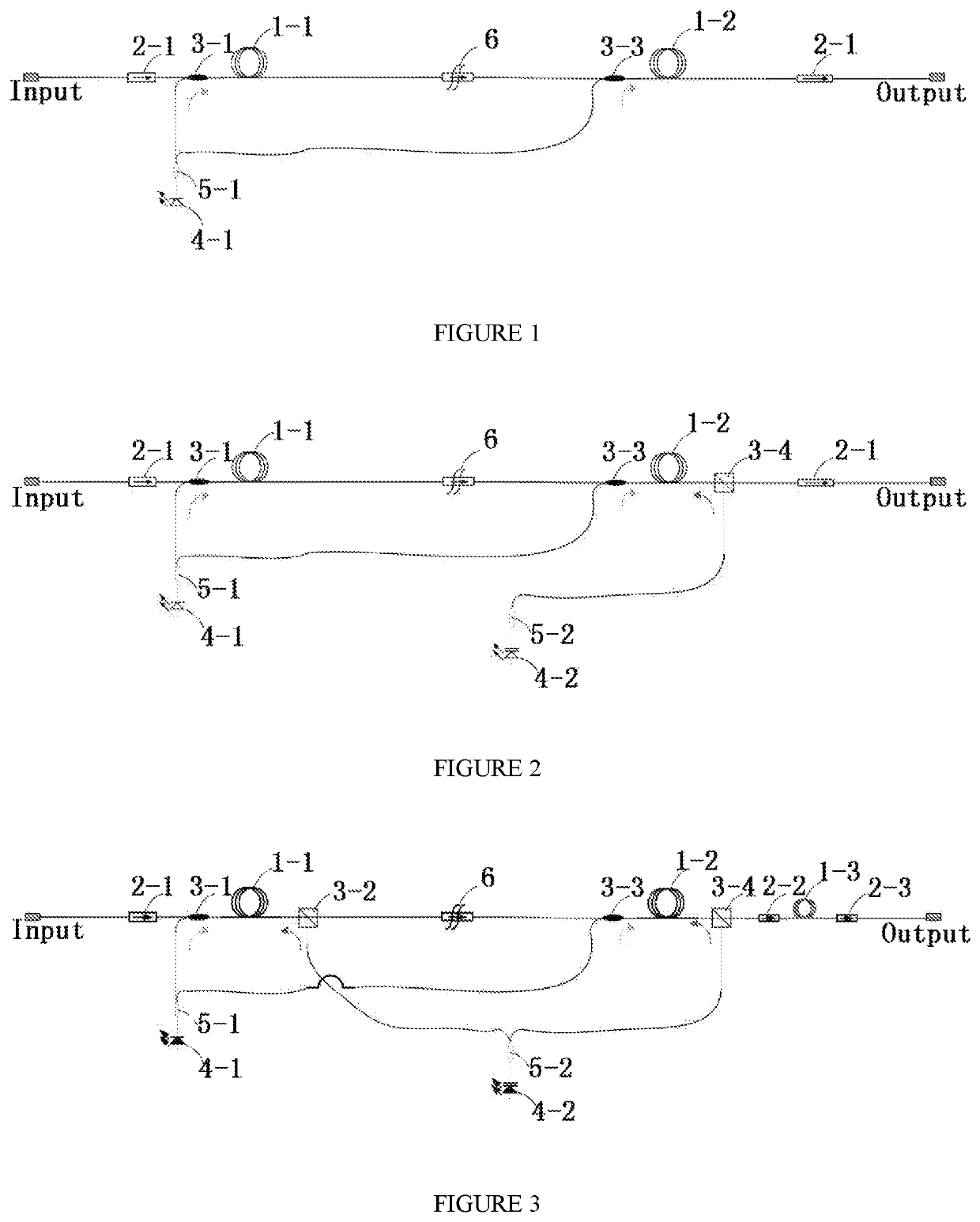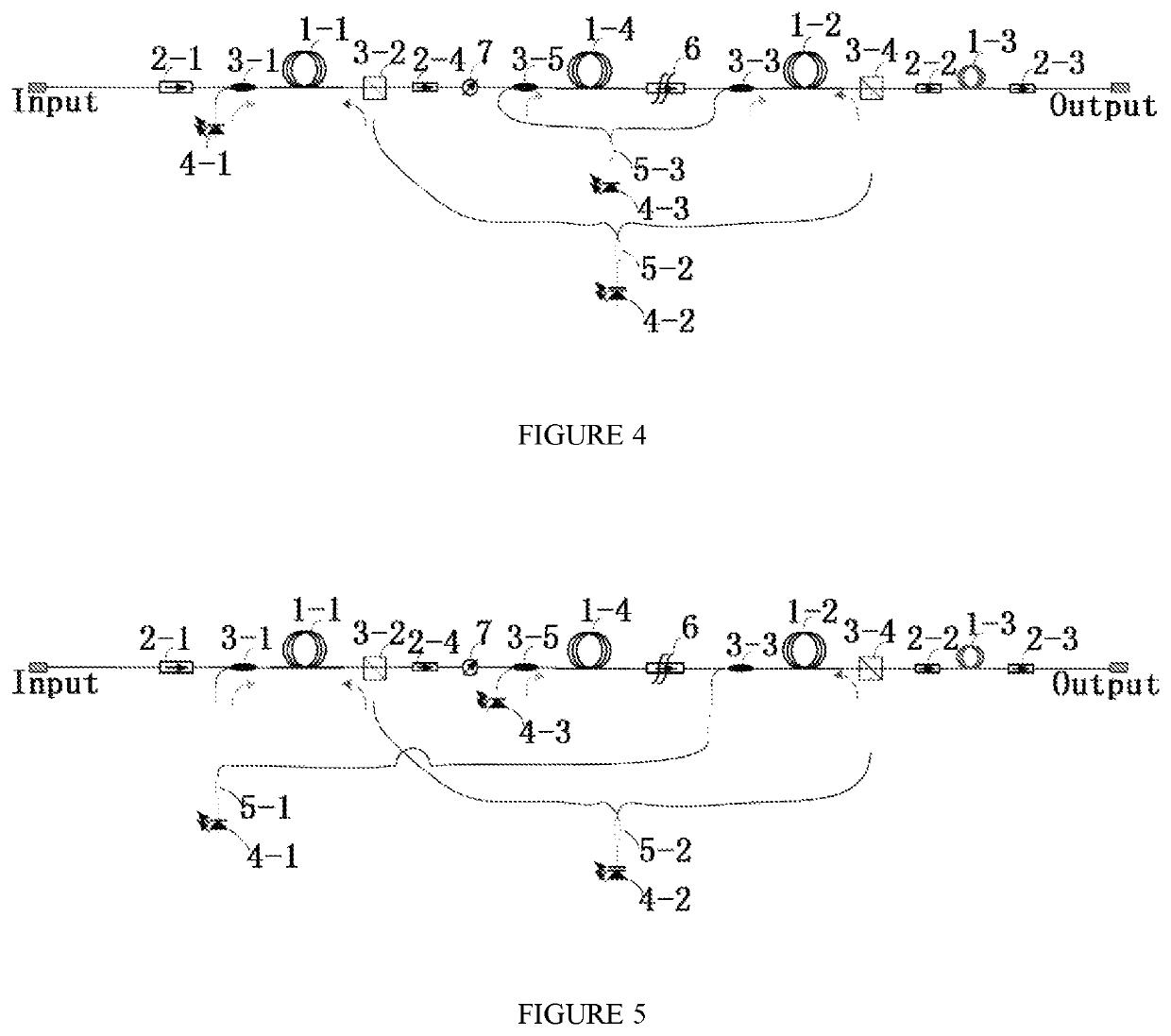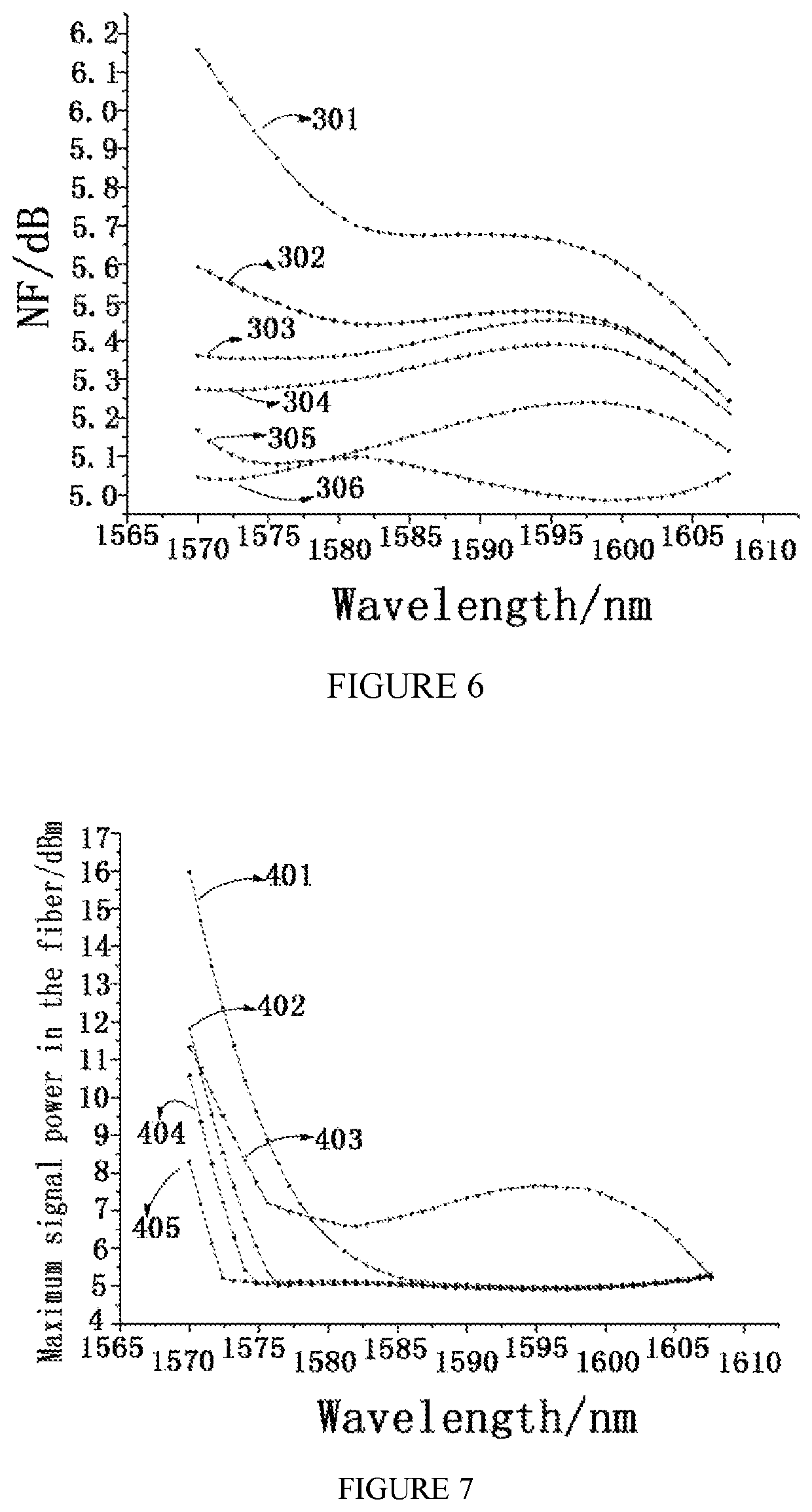L-band optical fiber amplifier with pumping balance
a technology of optical fiber amplifier and balance, which is applied in the field of optical communication, can solve the problems of low conversion efficiency, high manufacturing cost of l-band optical fiber amplifier, and high noise, and achieve the effect of improving the conversion efficiency of pumping and reducing the noise figure and the noise in the optical path, and reducing the manufacturing cos
- Summary
- Abstract
- Description
- Claims
- Application Information
AI Technical Summary
Benefits of technology
Problems solved by technology
Method used
Image
Examples
embodiment 1
[0043]The embodiment of the present invention provides a balanced pumping L-band optical fiber amplifier, as shown in FIGS. 3-5, comprising a first erbium-doped optical fiber 1-1, a second erbium-doped optical fiber 1-2, an absorbing erbium-doped optical fiber 1-3 and at least two pumping lasers, the first erbium-doped optical fiber 1-1, the second erbium-doped optical fiber 1-2 and the absorbing erbium-doped optical fiber 1-3 being sequentially arranged in this order, the at least two pumping lasers providing pumping light; wherein the first erbium-doped optical fiber 1-1 is injected with forward pumping light and backward pumping light by the at least two pumping lasers, the second erbium-doped optical fiber 1-2 is also injected with forward pumping light and backward pumping light by the at least two pumping lasers. Compared with the existing double forward pumping, the present invention additionally provides backward pumping, so that the two erbium-doped optical fibers both are ...
embodiment 2
[0053]The specific structure of the fixed gain L-band amplifier FGA has been introduced in Embodiment 1, and on the basis of Embodiment 1, the specific structure of the variable gain L-band amplifier VGA will be introduced in this embodiment. The main difference from the FGA is that a variable optical attenuator (VOA) is added in the VGA. As the variable optical attenuator has a large insert loss, and the gain flatten filter has also a large loss at certain wavelength, the two elements will greatly influence the noise figure if they are placed together. Therefore, the two elements need to be arranged with different erbium-doped optical fibers. For this reason, the VGA structure will have one more erbium-doped optical fiber than the FGA structure, and the one more erbium-doped optical fiber is noted as a third erbium-doped optical fiber 1-4. The third erbium-doped optical fiber 1-4 has little influence on the noise figure and the output power, so it may have bidirectional pumping inj...
embodiment 3
[0062]In the present embodiment, the respective pumping modes are compared by experiments to demonstrate the overall performance of the optical fiber amplifiers provided by the present application. Specifically, taking the FGA provided in the Embodiment 1 as an example, the optical path comprises two erbium-doped optical fibers that need to be injected with pumping light. Under the same gain and output power, a relationship between the noise figure and the pumping modes and a relationship between the non-linear four-wave mixing effect and the pumping modes are studied. The study shows that the overall performance of the optical fiber amplifier is optimal when the two erbium-doped optical fibers both adopt bidirectional pumping and the absorbing erbium-doped fiber is additionally provided. The detailed experiment results are as follows:
[0063]FIG. 6 is a graph showing noise figure curves corresponding to different pumping modes with the same FGA gain and output power. With reference t...
PUM
| Property | Measurement | Unit |
|---|---|---|
| wavelength | aaaaa | aaaaa |
| wavelength | aaaaa | aaaaa |
| wavelength | aaaaa | aaaaa |
Abstract
Description
Claims
Application Information
 Login to View More
Login to View More - R&D
- Intellectual Property
- Life Sciences
- Materials
- Tech Scout
- Unparalleled Data Quality
- Higher Quality Content
- 60% Fewer Hallucinations
Browse by: Latest US Patents, China's latest patents, Technical Efficacy Thesaurus, Application Domain, Technology Topic, Popular Technical Reports.
© 2025 PatSnap. All rights reserved.Legal|Privacy policy|Modern Slavery Act Transparency Statement|Sitemap|About US| Contact US: help@patsnap.com



